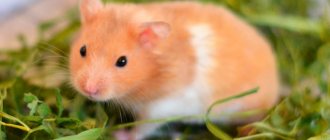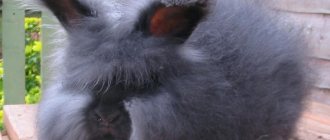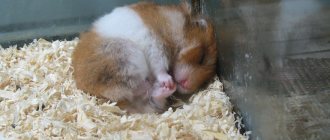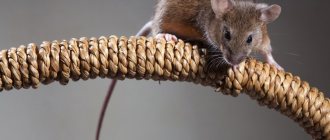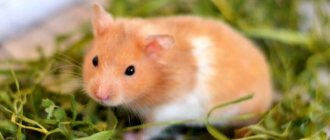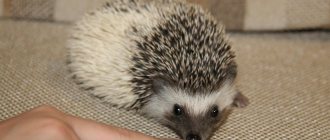Choosing a breed for beginners
Cute eared animals do not require complex, time-consuming care. They can be kept in an apartment. But for beginners, it is better to start breeding and keeping rabbits at home with short-haired breeds, since the fur of these pets is easier to care for. Long-haired breeds require daily care and special temperature conditions.
Rabbits respond to affectionate treatment and are able to reciprocate. The Fold-eared breed is popular among breeders. These animals are distinguished by their calm disposition and quiet behavior.
The animals live up to 12 years. They are often neutered at an early age. Then the animal has less worries, and it is even easier for the owner to care for the pet.
Decorative representatives include:
- Short-haired colored rabbits;
- fold-eared sheep breed;
- the Rex breed, whose fur resembles a plush toy;
- Angora breed, these rodents have a fur length of up to 20 cm;
- ermine rabbits, their fur is snow-white.
Ermine breeds are more demanding of room temperature and have a restless disposition. With such warm, thick fur, the animals feel hot in the apartment. For novice breeders, choosing representatives of the ermine breed will cause difficulties in caring for the animal's fur.
Harmful products
Some products are of little benefit and are even toxic to decorative rabbits. These include:
- store-bought food for birds and rodents;
- corn, dried peas, beans;
- boiled vegetables, greens;
- sweets, baked goods;
- bread, porridge, muesli;
- nuts;
- onion;
- sorrel;
- lemon;
- avocado;
- sweet fruits.
It is important to keep the cage and equipment clean, and clean the tray regularly. You should change the water daily, add fresh food, and monitor the amount of hay consumed. Long-haired breeds of decorative rabbits require daily brushing. Bathing is extremely stressful for rabbits, so water procedures are carried out in case of emergency.
When getting rabbits, you need to understand the full responsibility for the health and life of the pet. Decorative rabbits are sensitive and require careful handling; they need to be cared for with love. Nutrition plays a big role in the quality of life. A properly formulated diet and proper feeding are the key to successful and long-term maintenance.
Placing rabbits
It is important for a novice rabbit breeder to make the right choice in which way to place the pets. Then the care and maintenance of fluffies will give positive results.
- Contents in cells. This method has its pros and cons. On the one hand, in cages it is easier to control the nutrition and health status of each animal, and the risk of the spread of infectious diseases is reduced. On the other hand, the construction and equipment of cells requires certain costs. In addition, daily cleaning and individual feeding are time consuming. When kept in an apartment, rabbits should definitely have a cage. However, recently portable enclosures for furry pets have appeared in pet stores.
- Cultivation in an aviary. This method is most often used for seasonal breeding of meat rabbits, for example, in the summer at the dacha. It is relatively cheap, there is no need to build and equip individual cells, but some nuances need to be taken into account. The fencing is made not only from above, but also underground. It costs nothing for rabbits to dig under and escape. They deepen the fence by 80–100 cm. In addition to the open space, pets should have shelter from rain and bad weather, and for mothers, a secluded place where they can give birth and raise their rabbits. Drinkers and feeders are firmly fixed to the walls. Pets of approximately the same age are placed in the enclosure and all at once. “Strangers” moved in later may not be accepted and may even be injured.
- Growing in a pit. An economical and convenient way to care for rabbits in the countryside. There is no need to build additional rooms for breeding and wintering - the rabbits will dig them themselves. In winter, the pit is warm; you just need to make a canopy to keep precipitation out. The pit is placed on a hill or a thorough drainage is made and water is drained to avoid dampness and flooding.
- Grazing method of keeping. At its core, this is a large enclosure. Place it in an area sown with clover, alfalfa, timothy, oats or other herbs tasty for rabbits. Rabbits feed on their own; it is only important to provide them with fresh drinking water. There is no need for daily cleaning and cleaning of cages. Animals kept freely grow and develop better and get sick less than their counterparts imprisoned in cramped cages.
Attention! Furry and downy breeds should not be kept in a common enclosure or pit. Rabbits often fight and damage their skins with scars and bald spots.
Cage equipment
You can buy ready-made cages or build your own. To do this you will need metal mesh, plywood, boards and slats. The approximate size of the housing for two individuals is 60x70x50 cm. The floor in the cage is made of mesh or made of slats with an interval of 1–1.5 cm. The front wall is also made of mesh, the back and sides are solid. Cells can be arranged in several tiers. If the building is located on the street, it is necessary to make a roof or canopy and provide insulation for cold weather. Straw, sawdust or spruce branches are laid on the floor.
The rabbitry is located on the site so that the front part of the cages faces southeast. In winter, the cages are moved to a heated barn. If they remain outside, they are insulated with polystyrene foam, mineral wool, grass mats and other heat-insulating materials.
Choosing a cage and location
It is necessary to keep a decorative rabbit in a large cage that will allow the animal to move freely. Tight cells contribute to slower physical development, thinning of bones and muscle corset. The cage space should be 5 times the size of the rabbit. The decorative rabbit is also called a dwarf rabbit. The size of the animal is small, which is why they are also called mini rabbits.
The long side of the long-eared dwelling ranges from a meter to one and a half meters.
The temperature in the room where the pet will live should be from 18 to 20 degrees. Do not place the cage in direct sunlight or drafts. Animals cannot tolerate overheating and drafts, so choosing a place for a cage near a radiator or under an air conditioner is also not recommended.
Rabbits are afraid of loud and sharp sounds, so it is better not to place a TV in the room where the animals will live. They are also afraid of other pets, so they are not suitable for common areas, unless there are other pets in the house. Bright rooms with access to fresh air are suitable for the long-eared place of residence. That is, it is better not to place a cage in the kitchen, corridor or hallway. And when ventilating, you need to make sure that there are no drafts.
Owners of private houses are building enclosures for eared animals. The main thing in such an enclosure is protection from rain and from prying eyes. You can also keep eared pets in a barn.
It is also possible to keep them at home without a cage. This is possible with a large population of eared animals. In this case, a hole is dug for the animals on the site at a depth of up to 1 meter, and they dig holes for themselves there.
Names for rabbits girls and boys
The pet's name should be short and sonorous, then he will quickly learn it.
IMPORTANT: At first, as soon as the rabbit begins to respond to the call, you need to encourage it with a treat.
Many owners choose a nickname based on the obvious distinctive features of the rabbit: color, habits, character traits:
- An albino pet , if it is a boy, can be called Bely, Snezhok, White , if it is a girl - Blonda, Snezhka, Anzhi, Belyan
- For gray rabbits, suitable names are Gray, Smokey, Brass - for boys, Mini, Smoke - for girls
- A restless baby can be called Shustrik, Dashing , if it is a boy, but if it is a girl - Naughty, Shursha, Shusha
Some rabbit owners name their pets after their favorite characters from feature films and cartoons:
- Elsa, Feona, Jasmine, Gloria, Bella, Hera for females
- Nemo, Marty, Funtik, Kuzya , Simka for males.
There are owners who humanize their furry and call boys with male names - Vanka, Max, Zhorik , and girls with female names - Lana, Nora, Shura .
A decorative rabbit will quickly get used to its name and learn to come running when called.
IMPORTANT: Once a pet begins to respond to its name, it must not be changed under any circumstances.
How to equip a cage
In the cage, your eared pet should have:
- Toilet;
- sippy cup;
- feeder;
- wooden house.
The cage should have a plastic tray. This material is easy to clean and does not react with animal waste products. A slatted floor is a bad option because the animal's paws get stuck between the bars. This can cause your pet to break or twist its paws.
Place a mat in the tray to prevent the paws from slipping. The filler is poured into the tray. If you put sawdust or hay in the tray, the rabbit will use the entire cage as a toilet.
The drinking bowl and hay box must be attached to the bars of the cage, as these animals love to take loose objects in their teeth and knock them against each other or against the walls of the cage. And you need to choose a feeder that is heavy and stable so that your pet doesn’t tip it over.
A pet needs a resting place to hide in case of fright.
What should a cage be like for a decorative rabbit?
When choosing a suitable home for your future furry pet, adhere to the rule “more is better than less.” Naturally, within reasonable limits. The size of the cage should be at least 4 times larger than the baby rabbit itself. These animals grow quite quickly, and it is important that they have enough space. If an adult rabbit cannot lie down the full length of its body, then the cage is too small for it. The animal must also be able to stand on its hind legs and stretch upward. If the height of the cage does not allow him to do this, think about purchasing a more spacious living space for your pet. In addition, it is necessary to provide the possibility of placing:
- hay manger;
- automatic drinker;
- house (preferably, but not required).
You should immediately acquire a carrier cage for transporting your furry pet.
It is better to secure all accessories to the bars of the cage, thereby saving space for the animal. The structure must be equipped with a plastic tray. Never buy a product with a mesh floor. The paws of decorative rabbits are not suitable for walking on such a surface, and therefore can be injured.
The following video will tell you how to prepare the cage before the rabbit appears:
Conditions of detention
Keeping a decorative rabbit at home requires some skill. Long-eared animals cannot stand the heat, but they can be helped. The ears of animals have the function of thermoregulation. To cool the body temperature, wipe the animal's ears with a damp cloth from the outside. To reduce the temperature inside the cage, place a towel soaked in cold water over it, and place a bottle of cold water and ice in the cage.
Rabbits are quite shy animals. Harsh sounds cause them stress, which subsequently has a negative impact on their health. And if a loudly barking dog lives in an apartment, then such a sound can cause the long-eared pet’s heart to stop.
To establish a trusting relationship between the owner and the pet, the animal needs to be stroked and periodically held in your arms. They do this not every time the owner wants, but when the rabbit is awake. You cannot shout at your pet, as their hearing is sensitive, the owner’s cry is perceived as a bolt from the blue.
The rodent needs to go for a walk every day to develop and maintain its physical skills. But while walking, you need to keep an eye on your pet.
Games and entertainment
It is necessary not only to periodically let rabbits out of the cage to walk around the apartment, but also to offer them games. An animal left unattended can not only chew furniture and wallpaper, but also cause harm to itself, for example, by biting wires. Therefore, take care of entertainment in advance in the form of:
- special toys that are sold in pet stores and are intended for dogs and cats (rubber bone, ball with a bell, etc.);
- a running ring installed in a cage;
- a walking ball for traveling around the apartment;
- cardboard box with cut-out entrances and exits;
- paper cylinders left over from using toilet paper.
Domestic rabbits are willing to be handled and love to be stroked and scratched.
Another option is to build a special enclosure for walking, where the animal will be provided not only with space, but also with safety.
How to properly care for rabbits at home
Successful breeding and care of rabbits at home consists of meeting the following requirements.
- Choosing a method of keeping and reasonable placement of pets. Rabbits are kept in sheds, enclosures, and pits. The rabbitry can be located in an open space under a canopy. A mini-farm can even be set up in an apartment or on a balcony. Females, males and young animals are housed separately.
- Balanced food, always fresh drinking water. Caring for rabbits involves high-quality, fresh food, the required amount of vitamins and mineral supplements. Under no circumstances should you give your pets rotten hay or vegetables. Root vegetables are washed before feeding, and fresh green grass is slightly dried. Food should be varied.
- Timely vaccination, daily examination. It is necessary to identify sick and simply lethargic individuals and immediately place them in separate cages to determine the cause and treatment. This way you can prevent others from becoming infected.
- Daily cleaning and keeping cages clean . In unsanitary conditions, rabbits are much more likely to get sick. Once every 10 days it is necessary to disinfect the cage and all equipment in it: feeders, drinking bowls. The litter is changed more often, depending on the contamination.
Features of rabbits - an excursion into history
Rabbits were bred in captivity for the first time on the Iberian Peninsula. At first they were hunted for dietary meat and valuable fur. Then suddenly the fact was discovered that the meat turns out tastier if the rabbits are kept in cages.
Rabbits began to be bred in special premises - rabbit farms and sold throughout Europe. Through crossbreeding, meat, skin and complex breeds emerged. Industrial rabbit breeding arose.
Decorative rabbits came to Russia after perestroika, in the 90s of the last century. Today there are special nurseries and large exhibitions are held where you can purchase almost any breed of rabbit.
Decorative rabbits are classified as small pets. If ordinary rabbits raised in private farmsteads for fur or meat reach a weight of 7 kg, then decorative individuals in adulthood barely gain weight 2, some breeds 3 kg. Two-month-old pets, which are taken from a female rabbit to a new family, weigh 300 g. Breeders have bred dwarf varieties of decorative rabbits, the babies of which weigh only 150 g at 2 months.
Other external features of decorative rabbits:
- shortened ears;
- large head;
- big eyes;
- short limbs;
- wide and flattened muzzle;
- short neck.
Popular breeds of decorative rabbits can have one-color, two-color or three-color colors. The coat can be the same or different lengths in individual areas. The ears can stick out, like all lagomorphs, or they can hang along the head. But the teeth, nose and tail are the same as those of other rabbits.
Queen cell
A pregnant rabbit needs a special room, a queen cell, to give birth and hide newborn rabbits from prying eyes. Usually this is a small extension to a cage measuring 40x40x30 cm, into which a round hole leads. The queen cell looks like a hole. But the roof still needs to be made removable in order to control the behavior of the young mother, remove stillborn babies, and see if everyone has enough milk. A few days before giving birth, the female rabbit lines the bottom of the queen cell with her down. No assistance required during childbirth. She will also take care of the newborn rabbits herself. You just need to provide her with enough quality food and fresh drinking water. If the mother feels a lack of one or the other, she may eat her offspring.
Cleaning the cage
To keep your pet clean, it is recommended to clean its home regularly. A clean animal’s “room” will not produce a stench and will ensure the cleanliness of the coat.
To avoid any odor, the tray is washed every day. But usually washing it twice a week is enough. The cage with tray and all accessories are washed 1-2 times a month using a special cleaning agent that does not harm the animals. If the contamination is weak, then it is enough to rinse the cage with water and vinegar. It is strictly forbidden to wash with household chemicals (dishwashing detergents, washing powder, chlorine-containing products).
Care and maintenance in an apartment or other enclosed space requires daily cleaning of the cages. If the rabbitry is located in an open space, you can clean it a little less often, once every 2-3 days. Disinfection is carried out 2-3 times a month. The cage and all equipment are doused with boiling water or treated with a 1% formaldehyde solution.
If it is possible to attach an enclosure to the rabbitry for walking, your pets will thank you with great activity and good weight gain. You can walk rabbits all year round.
Nutrition
In summer, rabbits are fed mainly with forbs, leaves of bushes and fruit trees, vegetables, fruits, and root crops. And also roughage: grains, legumes, compound feeds. The grass should be given pre-dried to improve digestion. Potatoes, carrots, beets, and celery must first be washed well.
The basis of the eared diet is hay, food, fruits and vegetables, twigs and clean fresh water.
There should always be enough hay in the hay barn. Feeding dry grass helps normalize digestion.
Special food is very important for animals, as it saturates the animals and contains the necessary nutrients. It comes in the form of grain food for rodents, or as a combined food. Compound feed is often chosen for feeding eared animals, as it promotes the growth of small individuals. Feed is given one tablespoon three times a day. Adults are given twice a day. The animals eat the tasty grains first without touching other parts of the feed. But you should not remove them immediately; it is recommended to wait until the pet has eaten the entire portion.
Teeth wear down on tree branches and solid food particles. Rabbits can be treated to branches of pear, poplar, willow, apple, and birch. The branches must first be washed and dried.
Salt and vitamin stones are sold in stores. They are useful to give to rodents. They ensure the supply of vitamins and minerals to the animals’ bodies.
There should always be boiled water in the drinking bowl. It needs to be changed every day.
Rabbits are given fresh plants: dandelion, alfalfa, yarrow and others. First, the pet is given a leaf to try and the body’s reaction to the new food is observed. If your pet liked the food and accepted it well, then you can give more of this herb next time. If your pet has problems with stool, then there is no need to give this plant.
Chalk and salt are needed all year round. 1–2 g of chalk and 0.5–1 g of salt per individual per day.
It is important for a rabbit breeder to know how to care for rabbits that have recently been taken from their mother. They still have a weak, not fully formed digestive system. Therefore, they cannot be fed with roughage and dry food, grains, legumes, and hay. It is better to give young animals tender young grass, vegetables, and boiled potatoes.
Rabbits' food should not contain cabbage and beets. But the animals like apples, pears and carrots.
How to pick up a rabbit correctly
Decorative rabbits are quite fragile creatures. They are not adapted to jumping from heights; their spine and muscular corset are weak. At the same time, the fright of the animals can make them jump from the hands of the owner who is holding the pet incorrectly. To avoid traumatic situations, you need to handle the rabbit correctly.
The first way to pick up a rabbit is to hold it under its front legs with one hand and support it from below with the other. In this position, the rabbits feel most calm, they will not break free, and if they do, the owner has the opportunity to easily hold the animal.
The second way is to grab the scruff of the neck with one hand, and also support it from below with the other. Not all rabbits like this “grab,” but it does not cause any particular inconvenience and the rabbit should behave calmly.
The common myth that rabbits need to be held by the ears is a grave mistake. You can't keep rabbits like that. It is still impossible to take them only “under the armpits”, lift them by the front legs or by the “scuff of the neck” without lower support.
Preparing to buy a pet
Before buying a rabbit, you need to prepare its future habitat. Buy a cage. The cage must be spacious so that the animal can stretch out to its full height and stand on its hind legs. You also need a bottle for water, a special compartment for hay (usually included with the cage), a bowl for food, and a litter tray. Rabbits love to make noise, so choose a heavy bowl that is difficult to move and secure the hay section well.
The ideal toilet filler is natural wood (compressed sawdust). If you change it regularly, there will be no unpleasant odor. Please note that rabbits do not tolerate stuffiness and high temperatures; in the summer it is especially important to ventilate the room in a timely manner. The main heat exchange occurs through the veins in the ears, so to cool your pet, just wet his ears with cool water.
Hygiene procedures
Caring for a dwarf rabbit is a little more difficult than a regular one. To prevent the pet from damaging the furniture and floor, and also from accidentally scratching the owner’s hands, it needs to trim its claws. Do this 1-2 times a month, depending on the growth rate of the nail platinum. To trim claws, use a special nail clipper or small scissors. Rodent claws have a nerve ending and a blood vessel at the base. If you touch a nerve or vessel while cutting, it will cause pain to the animal. Therefore, you should cut off the claws in small parts so as not to accidentally cut off excess.
Soft fluffy wool is the pride of rabbits. To keep it in good condition, it needs to be looked after. The coat should be brushed daily with a special brush. If you don’t do this, your pet will develop tangles. They disrupt heat exchange, and when trying to get rid of them, rabbits may swallow wool. This leads to digestive problems.
Rabbits are clean animals. They take care of their fur coat themselves. But if an animal has diarrhea, then it is necessary to help it clean up. If your pet gets dirty, you should wash it. This should be done in a warm, draft-free room with a special shampoo. Immediately after washing, the rabbit should be dried.
Animals need to have wax removed from their ears. This is done using a cotton swab dipped in hydrogen peroxide. It is not recommended to use cotton swabs to avoid injury.
Eye care involves wiping them with a cotton pad moistened with clean water.
It is necessary to care for a decorative rabbit regularly in order to keep the pet clean and monitor the health of the ward.
There is a video for beginners to properly care for rabbits at home.
Diseases and vaccinations
Decorative rabbits are susceptible to:
- Myxomatosis;
- infectious stomatitis;
- coccidiosis;
- pasteurellosis;
- indigestion;
- diseases of the eyes and ears;
- helminthic infestation;
- diseases caused by tooth growth.
Worms, if not removed, can lead to the death of the animal. Therefore, your pet needs to be wormed regularly, once a season, even if the rabbit does not go outside.
To prevent diseases, rodents are vaccinated.
Vaccination is carried out according to the scheme. The very first vaccination that a young rabbit is given is a vaccination against viral hemorrhagic disease. The second vaccination against VGBV is given after 3 months, and subsequent ones every six months.
It is imperative to vaccinate your pet against myxomatosis. This vaccine is administered once a year. There are complex vaccines against VGBV and myxomatosis.
Myxomatosis is transmitted through parasites: fleas, mosquitoes and other blood-sucking insects. Since they appear during the warm period, it is better to vaccinate at the same time.
Pregnant females and those who have just given birth are not vaccinated until the rabbits are fed with mother's milk. It also makes no sense to vaccinate an animal that is already sick. Vaccinations are given only to healthy individuals.
After vaccination, rabbits are kept in quarantine for 2 weeks. Before vaccination, animals are dewormed 10 days before vaccination.
It is a good idea to vaccinate your animal against rabies, pasteurellosis, paratyphoid fever, and listeriosis.
A domestic animal is more susceptible to disease than a rabbit living on a free range.
Disease Prevention
Like people, rabbits suffer from infectious and non-infectious diseases. Most often they suffer from respiratory diseases of the respiratory tract and stomach upset. The symptoms are the same: runny nose, sneezing, redness of the mucous membranes, general weakness during a cold, and loose stools, sometimes with blood, due to gastrointestinal problems. The disease can be triggered by improper keeping of pets: dampness, drafts, crowded cages, poor nutrition and improper care.
To prevent the most dangerous viral diseases, it is necessary to get vaccinated on time. In addition, new animals cannot be immediately added to the main herd. They must be quarantined for three months.
Every business requires knowledge, patience and desire. Enjoy rabbit farming, and we will share the necessary knowledge with you.
When should you contact a veterinarian?
Warning signs: excessive nasal discharge, sneezing, tears, runny nose, swollen eyelids, pus, grinding of teeth, poor or no appetite, distended abdomen, lack of bowel movements or liquid feces, formations and tumors on the body, bald spots on the coat and copious amounts of it. hair loss, dirty fur, wet face, rapid breathing and heart palpitations.
Each of these symptoms may be the result of an animal illness. Once any of these signs are detected, the rabbit must be taken to a veterinary clinic immediately, because the disease spreads quickly and death can occur quickly.
Determining gender
Determining the sex of rabbits is an important and necessary task for those involved in breeding eared rabbits.
Immediately after birth and until weaning from mother's milk, it is very difficult and impractical to determine the sex.
As soon as the rabbits become more independent, it’s time to determine which of them is which. To do this, you need to place the individual on a hard surface. Holding the pet by the scruff of the neck, lift it and sit it on its tail. With the second hand, they open the fur in the genital area. In females, the genital slit should open, located close to the anus. Males have a round opening that is further from the anus than the female.
In males who have reached puberty, pronounced testicles can be felt.
Reproduction
Rabbits are very sexually active. This may cause the following problems:
- During puberty, your pet may become aggressive.
- The animal may unexpectedly change its place to defecate.
- The rabbit may begin to dig around the floor of the cage and thereby cause harm to itself.
- The animal can pester not only other pets, but also people!
There is no cure for sexual activity in rabbits. If you do not want to breed them, then it is better to sterilize your pet.
